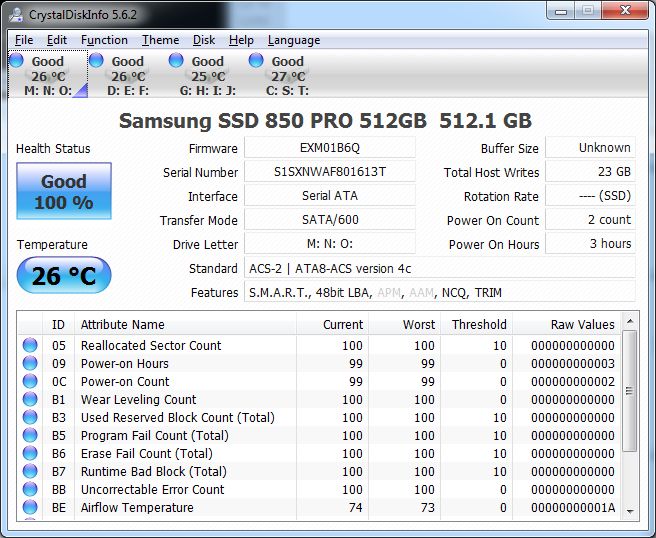

- #What does crystal disk mark do driver
- #What does crystal disk mark do free
- #What does crystal disk mark do windows
Since most people (me, too) run the tests as administrator, it's possible that the file system is creating the file and being extended with no fill, then the first writes to the file actually cause that fill. I'm also a bit concerned with the way that the tool initializes its test file, as it seems to create it very quickly. The stripe size on the array is 256 kilobytes, so my theory is that the tool doesn't appropriately generate random numbers which access all the drives in the broadly-striped array. (It's easy to verify this happens by copying a file to the array-all drives are pretty equally active.)
#What does crystal disk mark do free
I would have expected the accesses to be spread across all drives in the array, making all the lights flicker. Keep an eye on the free space there you don’t want to create a test file that can run your server out of drive space. When running the test, I only saw five disk drive lights in the array flickering. CrystalDiskMark offers you to select any drive that you want to do many tests on them to measure achievement for writing and reading. However, when doing so, I was surprised to find that the access pattern of the test seems to be off.

I was able to reproduce the poor performance of this setup using a different machine with a similarly configured array. My understanding is crystaldiskinfo show the hard drive status where hard-drive diagnostic tool from the manufacturer shows if it is dying or dead. If you notice anything moving a lot, CrystalDiskInfo will switch to a yellow warning and then followed by a red for failing disks. Current is what it reads today, worst is the smallest value recorded, and threshold is the value that is considered a failure.
#What does crystal disk mark do windows
That rig is a Core i7 945 box running Windows Vista 64 with a EVGA SLI motherboard and 12 gigs of memory, and the drive attached to a SATA port on the motherboard. So the SMART data is normalized so that they drop down to 0. I wouldnt be concerned with it unless you are. The average user probably writes no more than 10 TB per year. I also ran the program against an Intel X-25E 64 gig drive on my desktop machine. Autobahn said: When CrystalDiskInfo is running does it continuously read/write anything to the hard drive, which from what Ive read is not good for a SSD You can easily track how much you are writing to the SSD.
#What does crystal disk mark do driver
This means that the driver must still do some buffering, which enables it to do caching, which will alter the results. One of the most important is that the program uses FILE_FLAG_NO_BUFFERING when creating the file handle that it reads to or writes from, but does not provide an aligned buffer to the ReadFile() or WriteFile() calls subsequently used against the handle. I spent some time reviewing the source code, and found some interesting anomolies.


 0 kommentar(er)
0 kommentar(er)
